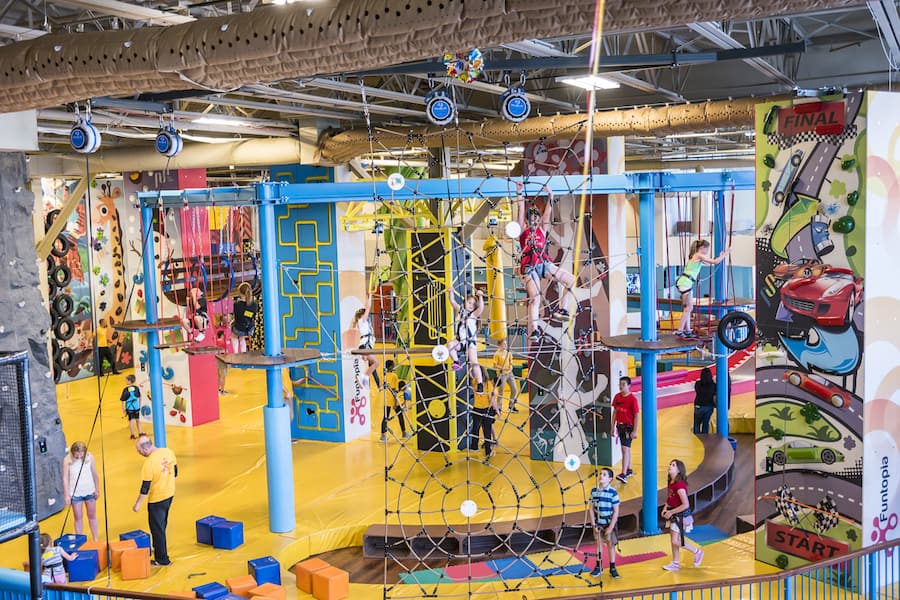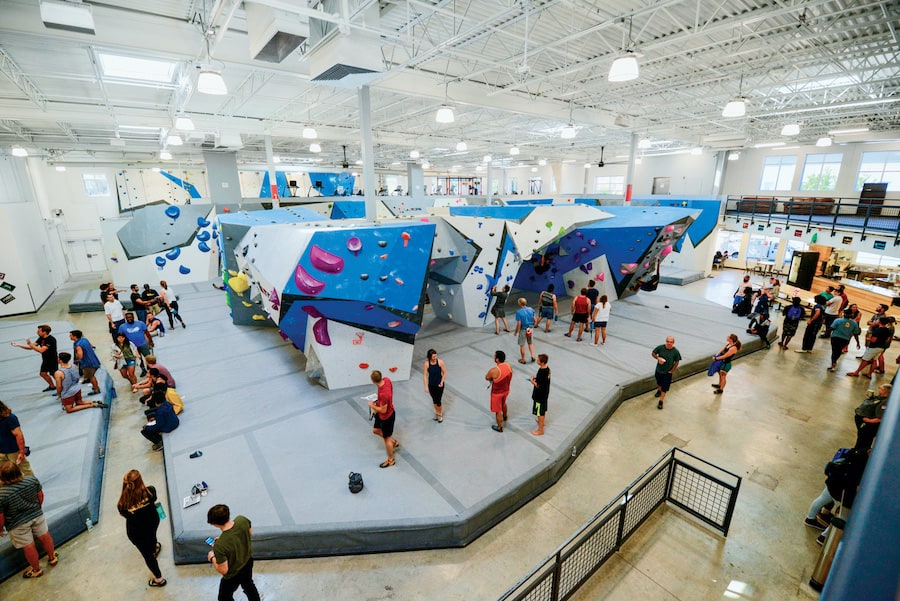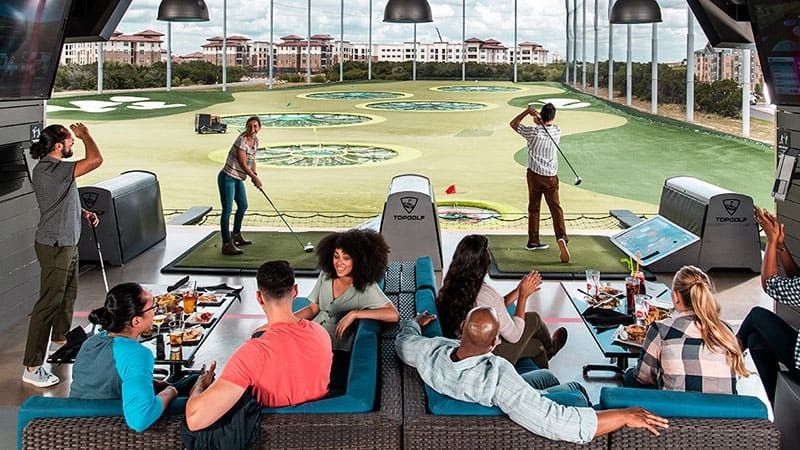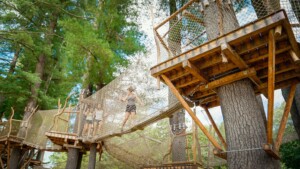Walltopia, a world leader in the climbing and adventure & leisure industries, has brought together some advice on flooring for climbing and active entertainment facilities, with insights from Climbmat, a top manufacturer of flooring solutions for climbing gyms and more.
In this sector, choosing the right safety flooring is key. In indoor boulder climbing, for example, it is mandatory in most parts of the world to put some impact-absorbing material underneath the artificial climbing area. This helps to accommodate landings and minimise injuries.
Bouldering flooring solutions
Flooring solutions suitable for bouldering include air cushions, shingle, or foam mats. Since falling is a part of the sport, these options work equally well for high wall climbing and active entertainment facilities too.
The most popular choice is foam safety mats – several layers of foam encapsulated together in a fabric bag (PVC coated, polyester fabric, carpet, ballistic nylon, etc.). When designing and purchasing a foam safety mat, several things should be taken into account.
Firstly, the impact area, which is the surface on which the user lands after falling from the boulder. Secondly, mat thickness – this should be able to absorb a fall from at least the top of the boulder. Thirdly, the material of the cover, which is the top surface on which the climbers walk, sit, and most importantly fall.
Operators can choose between vinyl, carpet and ballistic nylon. Vinyl is a popular option due to its elasticity and tensile strength, however, it is hard to clean and does to hold chalk. As a result, many users prefer carpet. The best quality and results are achieved when using vinyl and carpet together, since carpet on its own can be brittle and exhibit inelastic deformation.
Mat stiffness
Another factor to take into account is mat stiffness. A lot of factors can contribute to the stiffness of a mat, such as cover material type and stretchiness, type of construction, quality of the foam and its density, etc.
Bozhidar Oreshkov, PhD, is Head of R&D of Climbmat. He says:
“All of our products are on the lower half of the deceleration (impact force) range, allowed by the European and Australian standards. However, to some climbers, even our softest mats could feel hard. Thus alongside quantifying the forces experienced by climbers and minimizing the possibility for injuries, we advise our customers to educate all climbers on proper ways of falling on boulder mats, to further minimize the chances for injury.
“When it comes to lead and top rope flooring, a common practice in Europe and Asia is to not use protection flooring since it emulates the outdoor rock climbing experience.
“In our opinion climbers should be protected at all times since accidents, unfortunately, do happen often. It is true that in contrast to boulder climbing where climbers fall all the time, in rope climbing a fall from up to 3m should rarely occur, and falls between 5 to 15 m should not occur at all. But theory is different from reality.”

Human error must be taken into account
While climbing walls and high ropes sessions should be the safest of all ‘adventurous’ activities, with tried and tested auto-belay systems, human error can increase the risk. For instance, where a climber starts their ascend without attaching themselves to an auto-belay.
When designing operations and choosing equipment, operators need to focus on reducing the possible negative impact of human factors. Wherever possible, the risks must be assessed and plans made for additional forms of safety.
“Many gyms do not have protection flooring due to the lack of standards, but even the ones that require flooring, use up to 10cm mats which is not good enough protection for falls from above 3 metres,” says Oreshkov.
Floor safety in rope climbing gyms
Rope climbing gyms are a bit different from boulder gyms. The impact area recommended by most standards can limit injuries from a fall from the first anchor point. But it is recommended that an extended perimeter is covered for a safer experience at higher points.
Mat thickness is an important factor for which there is no set standard but a recommendation for an upper limit of 10cm is common. Since 10cm is not nearly sufficient, the suggestion is thicker mats with the same static stiffness as the thinner ones. Lastly, the impact-absorbing capacity of the mat is also key. This is strongly dependent on the thickness and stiffness of the material or the combination of materials used.
In Climbmat, we test and produce all of our products to be compliant with all existing and related standards and way beyond. We aim that our flooring gives protection not only for a fall from the first anchor point but even from the top of the climbing wall which is why we developed our crushable safety flooring system “One More Life,” says Oreshkov.

What about active entertainment?
There is one significant difference in active entertainment facilities, compared to Climbing gyms, that must be taken into account. This is the type of user. While in climbing gyms users are predominantly adults of different ages, in active entertainment facilities the majority of users are young kids.
As a result, operators must adjust their design considerations, for instance by extending the impact area. Wherever there is a possibility of a fall, safety flooring needs to be added. This should also extend to the vertical surfaces, where we could have a potential impact.
Also, operators must adopt mats with the right thickness and stiffness to absorb a fall from at least the maximum fall height. However, climbing flooring is designed and tested for adults. For venues where kids are climbing, the mats need to be both softer and thicker.
In short, flooring for Active Entertainment facilities needs to be significantly safer and softer, compared to climbing flooring.
Oreshkov finishes by advising: “Any attraction that does not have an incorporated belay system should have safety flooring similar to that in a boulder climbing gym, and any that does, should have rope climbing safety flooring.”
Earlier this month, Walltopia announced the launch of two new online tools, which will improve the process of creating concepts for active entertainment attractions.
Top image: One More Life Mat, Funtopia Glenview, Chicago USA














